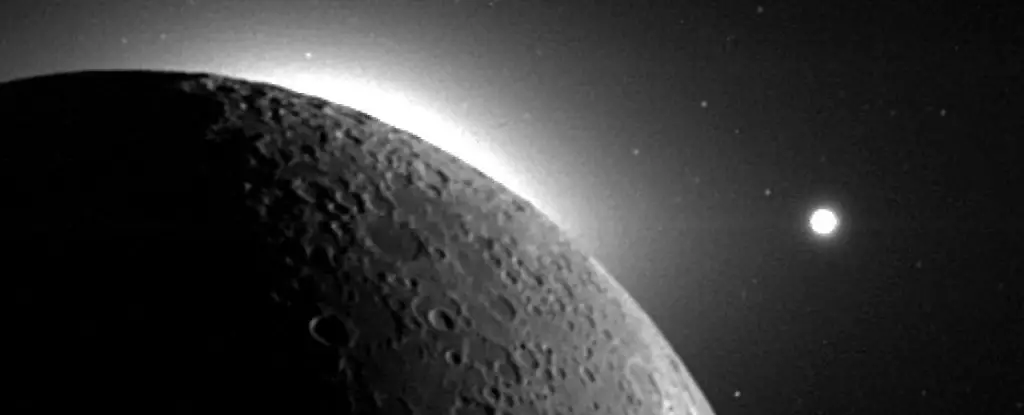In the vast expanse of our Solar System, the Earth-Moon system stands out as an exceptional celestial pairing. Unlike other planets that may have multiple moons or none at all, Earth’s significant satellite, the Moon, exhibits a mass ratio that is intriguing and unparalleled. This peculiar configuration leads to profound questions about the origins of the Moon and the evolutionary processes that dictate planet-moon dynamics. Scientists have predominantly leaned on the Giant Impact Hypothesis, positing that the Moon was formed from debris following a colossal collision between Earth and a sizable object. However, emerging research now suggests alternative origins, prompting us to reconsider the pathways that may have led to this unique relationship.
Recent studies, particularly by astronomers Darren Williams and Michael Zugger from Pennsylvania State University, explore a provocative theory: the Moon could have originated elsewhere in the Solar System and later became gravitationally ensnared by Earth. This gravitational capture process, previously overlooked in favor of more conventional theories, suggests that significant celestial bodies can acquire moons under specific conditions. The idea is that if two bodies move through space and interact at just the right angle and velocity, one can capture the other. This phenomenon has been documented in other areas of the Solar System, leading scientists to ponder whether Earth could have similarly seized the Moon during its formative years.
While the notion of gravitational capture is captivating, one must consider the substantial evidence linking the Moon’s composition to that of Earth. The mineral makeup of both celestial bodies reveals striking similarities, as if they share a common origin. This composition lends credence to the Giant Impact Hypothesis, where the interplay of various materials led to the Moon and Earth coalescing from a shared debris cloud. Alternatives, such as the synestia model, suggest that the Moon could have formed in a vaporized planet’s envelope or from the same cosmic dust cloud that gave rise to Earth. Each potential origin story paints a picture of a complex and intertwined relationship between these two bodies.
The concept of binary capture adds an intriguing layer to our understanding of the Earth-Moon system. In this scenario, two bodies bound by gravity cross paths with a third body, which can capture one of the pair, effectively separating them. This mechanism could account for the Moon’s eccentric orbit, which has been noted as misaligned with Earth’s equatorial plane. Williams and Zugger applied mathematical modeling to analyze whether such a capture could feasibly occur within our Solar System — and their results are compelling. They found that while the Earth could theoretically capture larger celestial objects (similar in size to Mercury or Mars), it could very well have captured something the size of the Moon into an elliptical orbit that eventually stabilized and drifted into its current position.
Despite the theoretical viability of the gravitational capture scenario, it is essential to weigh these findings against the bedrock of mineral and isotopic evidence that suggests a closer kinship between Earth and the Moon. While the hypothesis provides a pathway for exploration, it opens the door to broader investigations into how moons form around other planets. If we can understand the peculiarities of our own Moon’s origin, we may also glean insights into the potential for life-sustaining systems around distant stars. This has profound implications, particularly given the Moon’s pivotal role in maintaining Earth’s stability and environment, crucial for the flourishing of life.
The debate surrounding the Moon’s formation has taken a fascinating turn, from the dominance of a singular explanation to an acknowledgment of multiple pathways. As Williams aptly notes, “No one knows how the Moon was formed.” The evolution of thought surrounding its origin reflects our broader quest for knowledge about the cosmos, and the ongoing pursuit of answers may very well illuminate the processes that govern the formation of planetary systems across the universe. With each new study, we edge closer to unraveling the saga of our celestial neighbors and enhancing our understanding of our place among the stars.


Leave a Reply